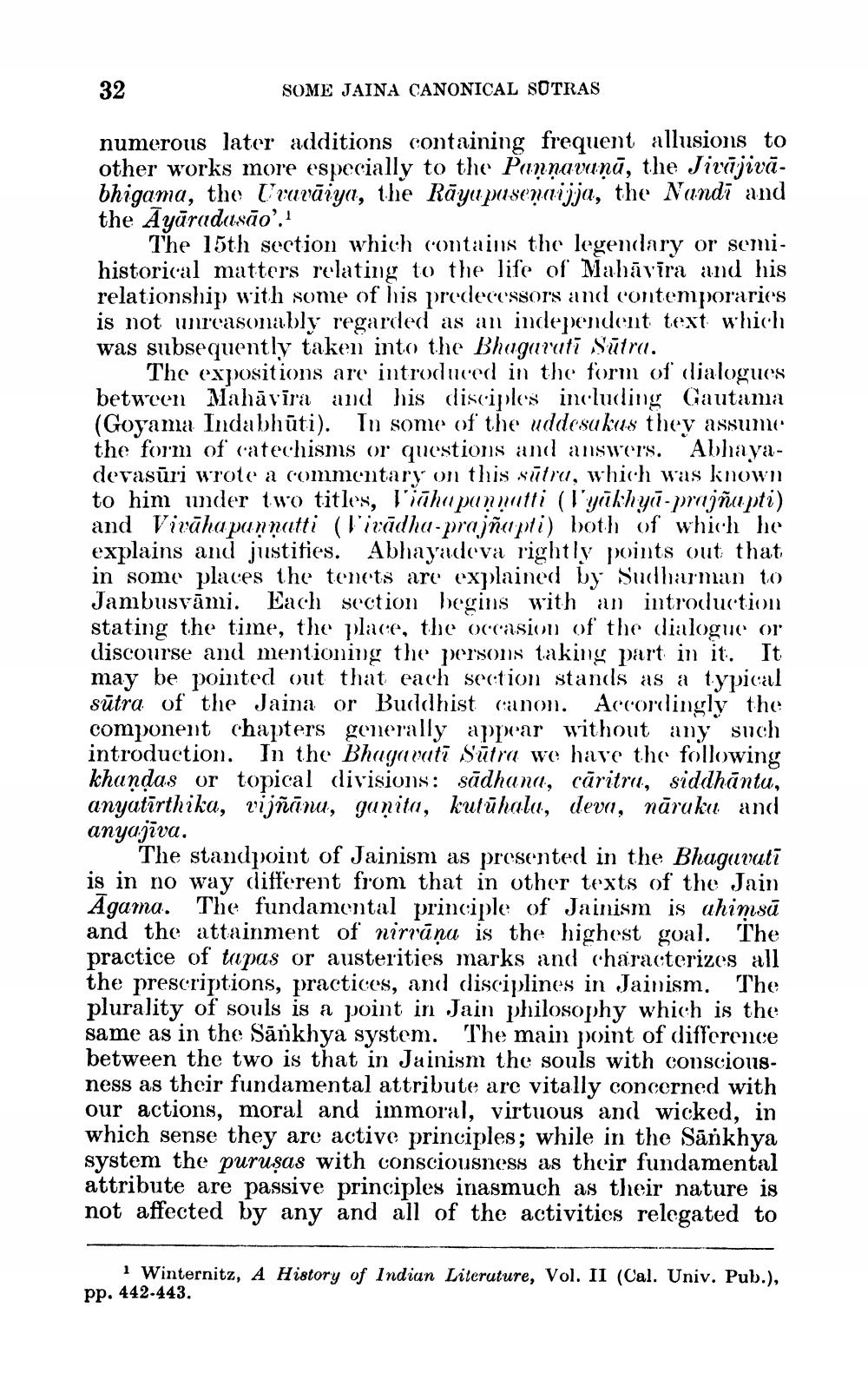________________
32
SOME JAINA CANONICAL SOTRAS
numerous later additions containing frequent allusions to other works more especially to the Pannavaņā, the Jivūjivābhigama, the travāiya, the Rāyu pusenaijja, the Nandi and the Āyāradasão'.'
The 15th section which contains the legendary or semihistorical matters relating to the life of Mahāvīra and his relationship with some of his predecessors and contemporaries is not unreasonably regarded as an independent text which was subsequently taken into the Bhagaruti Sūtra.
The expositions are introduced in the form of dialogues between Mahāvīra and his disciples including Gautama (Goyama Indabhūti). In some of the uddesukus they assume the form of (atechisms or questions and answers. Abhayadevasūri wrote a commentary on this sūtru, which was known to him under two titles, lāhapannutti (I'yakhyu-prajñupti) and Vivāha pannatti (livadhu-prajña pri) both of which he explains and justifies. Abhayadeva rightly points out that in some places the tenets are explained by Sudharman to Jambusvāmi. Each section begins with an introduction stating the time, the place, the occasiou of the dialogue or discourse and mentioning the persons taking part in it. It may be pointed out that each section stands as a typical sūtra of the Jaina or Buddhist (anon. Accordingly the component chapters generally appear without any such introduction. In the Bhagavutī Sūtra we have the following khandas or topical divisions: sādhana, cāritru, siddhāntu, anyatīrthika, vijñānu, gañita, kutūhalu, devu, nāruku and anyajīva.
The standpoint of Jainism as presented in the Bhagavati is in no way different from that in other texts of the Jain Agama. The fundamental principle of Jainism is ahimsū and the attainment of nirrāņa is the highest goal. The practice of tapas or austerities marks and characterizes all the prescriptions, practices, and disciplines in Jainism. The plurality of souls is a point in Jain philosophy which is the same as in the Sānkhya system. The main point of difference between the two is that in Jainism the souls with consciousness as their fundamental attribute are vitally concerned with our actions, moral and immoral, virtuous and wicked, in which sense they are active principles; while in the Sānkhya system the puruṣas with consciousness as their fundamental attribute are passive principles inasmuch as their natur not affected by any and all of the activities relegated to
i Winternitz, A History of Indian Literuture, Vol. II (Cal. Univ. Pub.), pp. 442-443.




